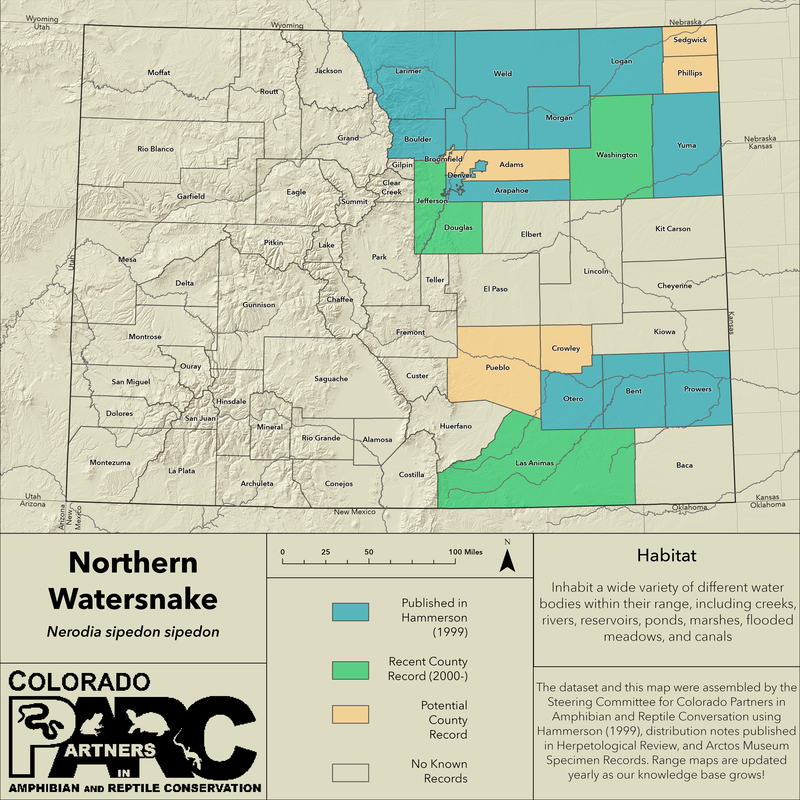|
Identification:
Distribution: In Colorado, this snake primarily occurs in the South Platte, Arkansas, and Republican Rivers and their drainages at elevations below 5,500 feet (1,675m).
(Hammerson 1999) Activity: Activity primarily occurs between the time of late March through early October, but may be extended if conditions are favorable to basking. This species is cathemeral, with nighttime activity most common in the water shortly after dark (Hammerson, 1999). Basking usually occurs in the late morning and early afternoon.
Conservation Status: Designated as a non-game species in Colorado. The Northern Watersnake remains present throughout its entire native range in Colorado and is locally abundant in certain areas. So long as a population’s water source remains intact, this species will likely remain stable for the foreseeable future. It is suspected that this species may in fact have increased in abundance since the arrival of European settlers due to the increase of irrigation canals (Hammerson, 1999).
NatureServe rank: T5 (Secure Subspecies), S4 (State Apparently Secure). |
Habitat: Northern Watersnakes inhabit a wide variety of different water bodies within their range, including creeks, rivers, reservoirs, ponds, marshes, flooded meadows, and canals (Hammerson, 1999). These snakes are rarely found away from the immediate vicinity of these bodies of water. Can be found swimming or under rocks and wood at the water’s edge.
Diet: The Northern Watersnake primarily feeds on fish and amphibians (both adult and larval stages), but will sometimes eat crayfish and other small animals (Hammerson, 1999). This snake primarily forages in shallow water.
Defense: When disturbed, Northern Watersnakes tend to flee into water or nearby vegetation. If handled, this species will usually secrete fluid from the vent and is known to bite often. It will also occasionally flatten its head into a triangular shape. (Hammerson 1999)
Natural Predators: Predators of northern watersnakes likely include larger snakes, American bullfrogs, birds of prey, and other carnivorous animals. (Hammerson 1999)
|
Cited & Additional Resources
Hammerson G. A. 1999. Amphibians and Reptiles in Colorado. University Press Colorado, Boulder.
Hammerson G. A. 1999. Amphibians and Reptiles in Colorado. University Press Colorado, Boulder.
Account compiled by: Hayden Lewis
Reviewed by:
Last Updated: 1/24/2023 by Anthony Berardi
Reviewed by:
Last Updated: 1/24/2023 by Anthony Berardi


